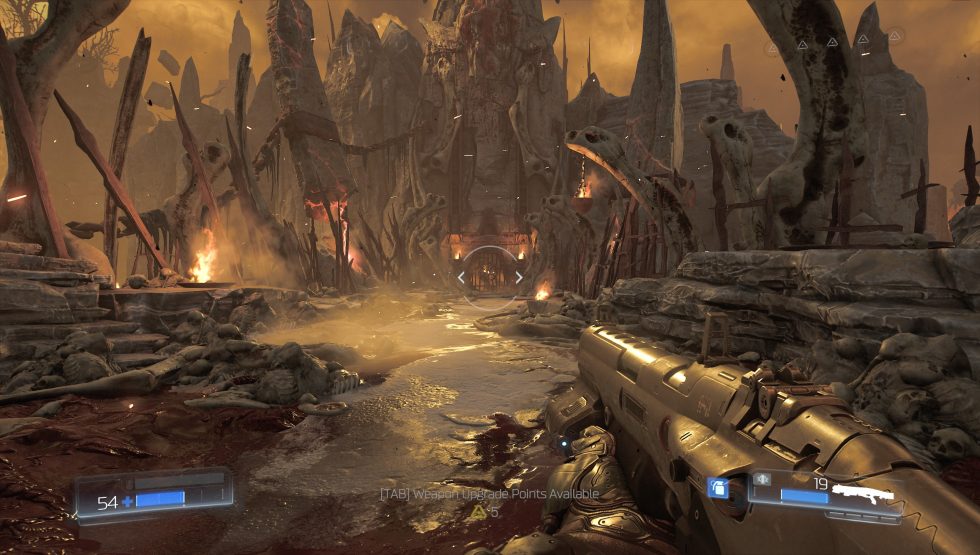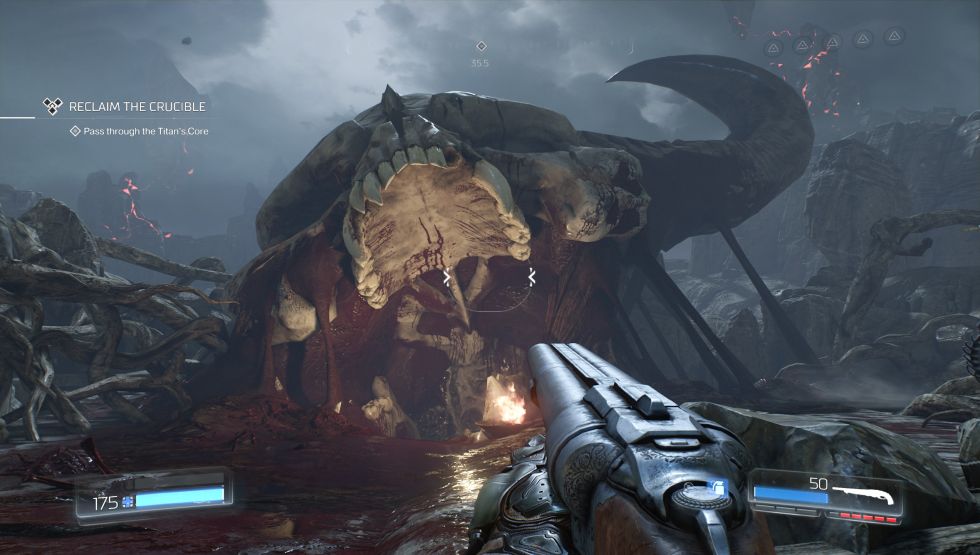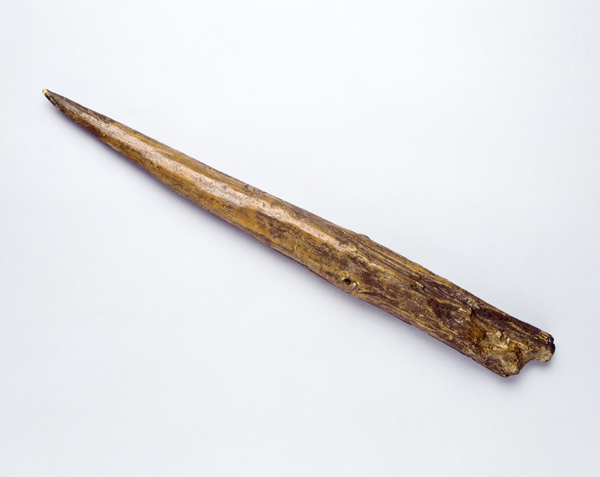
Hell is a lack of other people.
Modern first-person shooter design can be a real drag. So many shooters these days layer on RPG-style character development or optional stealth abilities to let you take down enemies without firing a single shot. When a firefight does happen, you're too often hiding like a turtle, nigh-unhittable behind a corner or a bit of cover, waiting for a break in the fire to pop up and spray a few quick shots at the opposition before reloading. And don't get me started on the selective devotion to "realism" that often lets players hide and "catch their breath" to recover from dozens of bullets to the torso yet forces those same players to slow down when they run out of breath after sprinting for a few seconds.
Those elements can all be fine in their own way. But the new Doom says nuts to all that. Like the early '90s ur-shooter it draws its name from, Doom is about nonstop dodge-and-fire action. You're constantly running at full speed while relatively out in the open, sidestepping bullets and enemies that you can actually see coming at you and shuffling between overpowered weapons to fire back at the enemies. Sneaking around or hiding behind a pillar won't help you here, and your health and armor meters don't recharge unless you actually run over items sitting on the ground—a once-standard shooter feature that feels practically archaic these days.
There are just enough modern shooter touches here to keep Doom from feeling entirely dated, but the basic gameplay doesn't feel like it's changed much since the days of Quake. It's as if the makers of the new Doom saw a shooter genre weighed down by decades of complex and often unnecessary cruft and said, "Nah, that's OK, we think we got it right the first time." (even if the current id Software "we" no longer actually includes any of the company founders that worked on the first Doom).
Demons, demons everywhere
If you think this huge skull is totally badass, you're probably still in middle school (at least mentally).
9 more images in gallery
Unfortunately, taking inspiration from the original Doom means taking inspiration from its general aesthetic as well. The second half of the game in particular looks like it uses a disturbed 7th grader's idle doodles as concept art, full of the kind of occult symbols, flames, and blood-drenched surfaces that seemed a lot edgier when you were a teenager. You could argue that it's all intentionally over the top, but I found the ruddy, red and brown gore-fest to be more than a bit numbing after a while.

 Die beiden ersten Teile der Arkham-Serie mit Batman erscheinen neu für Playstation 4 und Xbox One. Wichtigste Änderung ist die Portierung auf die Unreal Engine 4. (
Die beiden ersten Teile der Arkham-Serie mit Batman erscheinen neu für Playstation 4 und Xbox One. Wichtigste Änderung ist die Portierung auf die Unreal Engine 4. (
 Ein offenes Wi-Fi könnte ein Grund sein, in die Kirche zu gehen. Oder zumindest in die Nähe, denn Godspot strahlt auch nach außen. 220 Kirchen in Berlin und Brandenburg erhalten damit nun WLAN. (
Ein offenes Wi-Fi könnte ein Grund sein, in die Kirche zu gehen. Oder zumindest in die Nähe, denn Godspot strahlt auch nach außen. 220 Kirchen in Berlin und Brandenburg erhalten damit nun WLAN. (
 Fujitsu weist mit einem kleinen, stationären Roboter den Weg durch eine Ausstellung oder Messe. Der sympathische Robopin verwendet dazu Informationen aus Beacons und erinnert ein wenig an eine der Figuren aus dem Pixar-Film Wall-E. (
Fujitsu weist mit einem kleinen, stationären Roboter den Weg durch eine Ausstellung oder Messe. Der sympathische Robopin verwendet dazu Informationen aus Beacons und erinnert ein wenig an eine der Figuren aus dem Pixar-Film Wall-E. ( Energie für Elektronik, die auf der Haut getragen wird: US-Forscher haben ein System zur Stromversorgung und -speicherung entwickelt, das auf die Haut aufgebracht wird. (
Energie für Elektronik, die auf der Haut getragen wird: US-Forscher haben ein System zur Stromversorgung und -speicherung entwickelt, das auf die Haut aufgebracht wird. (


